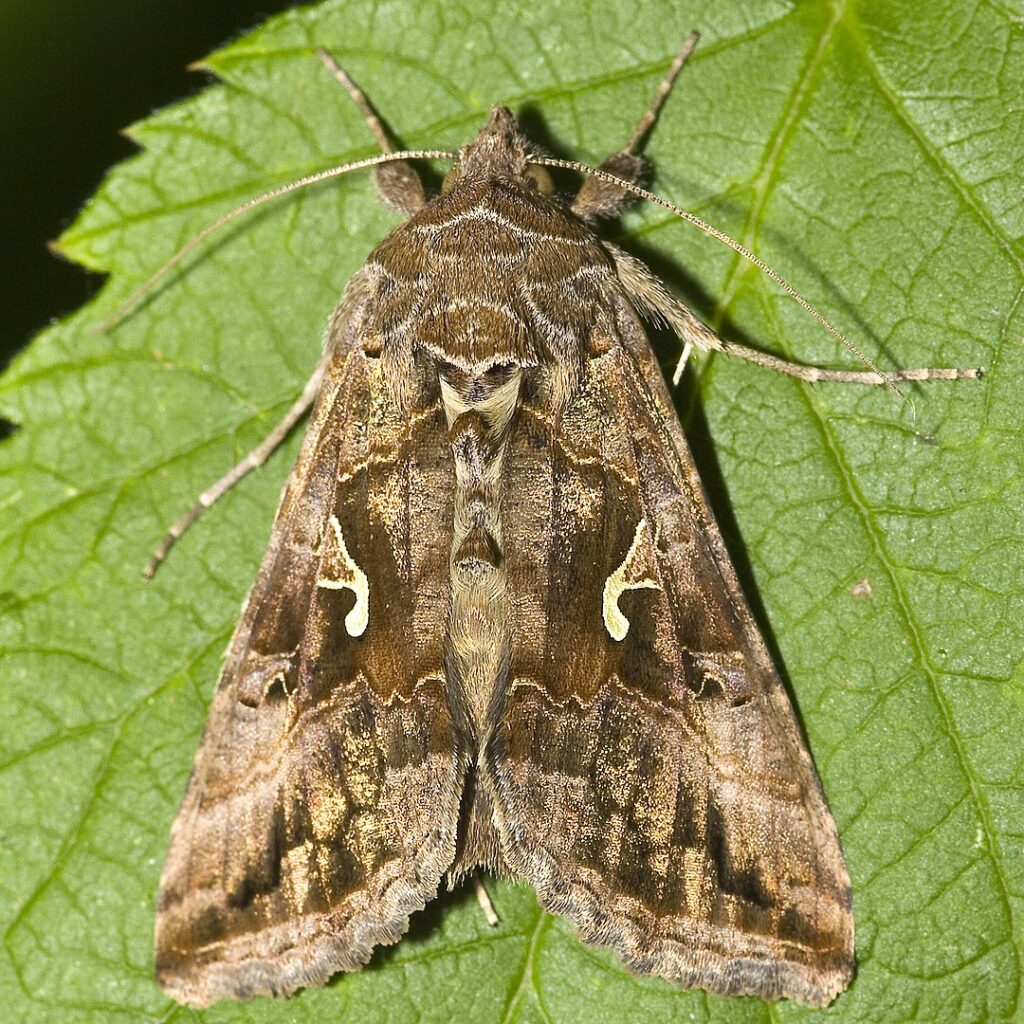
Autographa gamma (Silver Y Moth)
Autographa gamma, commonly known as the Silver Y Moth, is a migratory moth species in the family Noctuidae. It is widely distributed across Europe, Asia, and North Africa, and is recognized by the characteristic Y- or gamma-shaped silver mark on its forewings.
Description
The Silver Y Moth has a wingspan ranging from 30 to 45 mm. Its forewings are mottled grey and brown, providing excellent camouflage during rest, with a distinctive metallic silver Y-shaped mark—resembling the Greek letter gamma (γ)—at the center. The hindwings are a paler greyish-brown with a faint darker band. The adult moth is nocturnal but often active during the day, especially in sunny weather.
Habitat and Distribution
Autographa gamma is found throughout Europe, temperate Asia, and North Africa. It prefers open habitats such as meadows, gardens, grasslands, and cultivated fields. Being a strong flier, it is known for its migratory behavior, moving northward in spring and summer and returning south in autumn. It occasionally reaches as far north as Iceland and Scandinavia.
Behavior and Life Cycle
This species is migratory and breeds multiple times per year, depending on the climate. The adults are active from spring through late autumn. Females lay eggs singly on the underside of host plant leaves. The larvae (caterpillars) are green with white stripes and feed mostly at night, hiding at the base of plants during the day. Pupation occurs in a silken cocoon attached to vegetation.
Diet and Host Plants
The caterpillars of Autographa gamma are polyphagous and feed on a wide variety of herbaceous plants, including crops such as cabbage, lettuce, peas, spinach, and clover. This broad diet makes them a significant agricultural pest in some areas. Adult moths feed on nectar and are often seen visiting flowers in the evening.
Economic and Ecological Importance
Due to their widespread feeding habits, Silver Y Moth larvae can cause damage to a variety of agricultural crops, especially in large outbreaks. However, they also play a role in pollination and serve as a food source for birds, bats, and other predators. Their migratory behavior makes them a useful species for studying insect movement patterns and climate influences.
